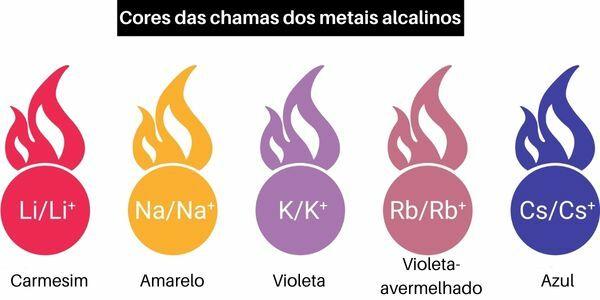A flag of Serbia It is one of the country's national symbols. Officially adopted from 2006, when Montenegro separated, the Serbian flag was standardized in 2010. It is composed of three horizontal bands in red, blue and white, which correspond to the colors pan-Slavic, and, moreover, they symbolize the blood of the people who fought for Serbia, freedom and maternal blood. On the left side, the coat of arms of the country is positioned, whose official adoption dates from 1882.
Read too: Flag of Poland — symbol whose colors derive from the country's coat of arms
Topics of this article
- 1 - Summary about the flag of Serbia
-
2 - Meaning of the flag of Serbia
- Serbia flag colors
- coat of arms of serbia
- 3 - History of the flag of Serbia
- 4 - Serbia
- 5 - Protocols of the flag of Serbia
- 6 - Curiosities about the flag of Serbia
Serbia flag summary
The flag of Serbia is one of the country's national symbols.
It features the pan-Slavic colors (red, blue and white) and the country's coat of arms.
Its colors represent the blood of those who fought for Serbia (red), freedom (blue) and the maternal milk that generated the country's strong children (white).
The current flag design, incorporating the coat of arms, was adopted in 2004. Pan-Slavic colors, however, began to be used in the 19th century.
It officially became the national symbol of Serbia in 2006 after the separation of Montenegro.
The protocol for the use of the flag of Serbia determines, among other specifications, that the symbol be permanently hoisted at the entrance to official government buildings, with the exception of the Assembly National.
In the case of the National Assembly, the flag must be flown during sessions and at official ceremonies in Serbia.
Serbia flag meaning
The flag of Serbia is one of the country's national symbols. She cIt consists of a rectangle composed of three horizontal stripes, all of the same thickness, in red, blue and white colors. On the left half of the pavilion is the coat of arms of Serbia, formed by a double-headed eagle. on a red background, a white cross in the center and a crown arranged above this set of elements.

Serbia flag colors
There is more than one interpretation for the colors gifts on the flag of Serbia. The scheme formed by red, blue and white can be understood as a symbol of pan-Slavism, a movement that defended the union of Slavic peoples. The three colors represent freedom, and are now present on the flags of several other countries, such as Russia, Slovakia It is Slovenia.
The government of Serbia, when presenting the Serbian national symbols, introduces the symbology of each of the colors individually:
◦ Red: represents the blood of those who fought for the country.
◦ Blue: represents freedom.
◦ White: it represents the mother's milk that fed the strong children of Serbia, who became and will become great fighters.
coat of arms of serbia
The coat of arms of Serbia, present in the national flag, is formed by a double-headed eagle facing opposite directions. One of them faces the kingdom of heaven, while the other faces the kingdom of Earth, thus representing the dichotomy between the sacred and the secular. The coat of arms is derived from the Byzantine Empire, and was officially adopted by Serbia on September 16, 1882.
Do not stop now... There's more after the publicity ;)
Serbia flag history
The current Serbian flag he was officially adopted by the country in 2006, when there was a separation between the territories of Serbia and Montenegro. However, since at least the 13th century there have been flags that represented Serbia at different times in its political and territorial history.
The colors red and white, mainly, and blue became more present from the 19th century, more specifically in 1804, when the Serbian resistance against the domination of the ottoman empire. The flag of Serbia was officially recognized by the then Ottoman sultan in 1835, and was then formed by horizontal dark red, white and blue bands, with the coat of arms in the center. This was the symbol of the country until 1918, when the Kingdom of Serbs, Croats and Slovenes was constituted, later renamed Yugoslavia.
The flag of Yugoslavia was inspired by the Pan-Slavic movements, and therefore carried the colors blue, white and red in that respective order. After the end of Second World War, the Yugoslav flag also consisted of a red star with yellow edges. With the dissolution of Yugoslavia in the early 1990s, Serbia and Montenegro became a single country and adopted the blue-white-red tricolor pennant as its flag.
In 2004, the state flag incorporated the Serbian coat of arms that we know today, although the civil flag remained as it was. It was only with the separation of territories, two years later, that Serbia officially adopted its current flag.
Read too:Flag of Germany — symbol representing unity, freedom and democracy
Serbia

Serbia is a european country located in the eastern region of the continent, at PBalkan Peninsula, with capital in the city of Belgrade. With no outlet to the ocean, Serbia borders eight other European countries and Kosovo, an autonomous republic that declared independence from Serbian territory in 2008.
Due to its proximity to the sea, it has mediterranean climate in the western region. Inland, the temperate continental climate prevails. O relief of Serbia is very diverse, formed by plains, mountain ranges, karst formations and mountains. In its hydrography, the presence of the river Danube stands out, one of the main watercourses of the Europe.
The population of Serbia is approx. 8.7 million inhabitants, most of whom live in urban centers. Belgrade is the largest city in the country, home to 1.4 million people. The process of population-ageing and population reduction, which decreases at a rate of 0.5% per year.
Serbia It is a poor country compared to other European countries.. Its economy focuses on tertiary sector, with emphasis on trade and tourism, and in the manufacturing industry, in addition to the great relevance that foreign direct investments have for the internal economic development and for the infrastructure.
Serbia flag protocols
The Serbian Constitution determines the protocol for the use of the flag and other national symbols.
the serbian flag must be permanently hoisted at the main entrance of State bodies, with the exception of the National Assembly. In this case, the use of the flag is made during sessions and national celebrations. In the buildings of local authorities and regional authorities, hoisting takes place on public holidays and national celebrations in Serbia. In times of mourning, the flag is flown at half mast.
There are other occasions when legislation allows the use of the flag from Serbia. Highlights:
Significant ceremonies, celebrations and events for Serbia.
International meetings, competitions and other occasions as provided by law.
Occasions and events whose rules do not contravene the Constitution of Serbia.
Facts about the flag of Serbia
Some people call the flag the “tricolor” or trobojka, in the local language.
As a result of the events leading up to the First World War, you U.S showed support for the country. Serbia Day was celebrated in US territory on July 28, 1918, and the flags of both countries were hoisted at the White House, seat of the US government.
The flag of Serbia was chosen as the most beautiful in the world in 2022 by a poll conducted by an American company (Ranker), with one million voters.
By Paloma Guitarrara
Geography Teacher
With Tito's death, Yugoslavia weakened. This was one of the reasons that triggered a terrible civil war between the different ethnic groups that made up the country.
Click here, learn the meaning of the German flag, understand what its colors represent and see how this flag has changed throughout history.
Click here, discover the meaning of the flag of Denmark, learn about its history and the legend that tells the origin of this symbol of the country.
Click here, understand the meaning of the colors on the Polish flag and learn the history of this Polish national symbol.
Do you know the countries that make up Eastern Europe? Click and read everything about this important region of Europe. Learn about its economy, history and culture.
Click and get to know Serbia, a country that was part of Yugoslavia. Understand the main geographical aspects of Serbian territory, and learn about its history and culture.



